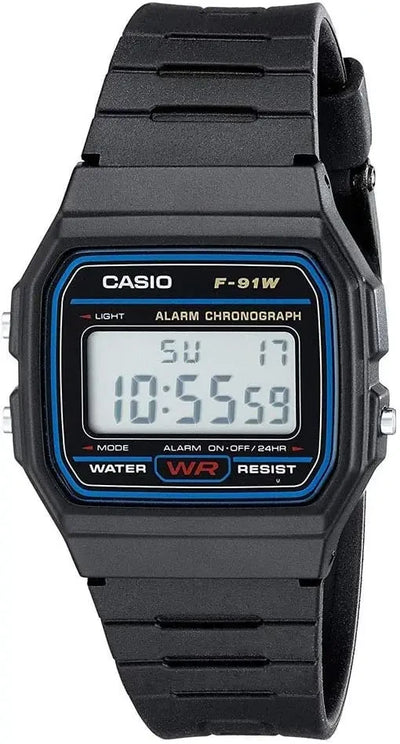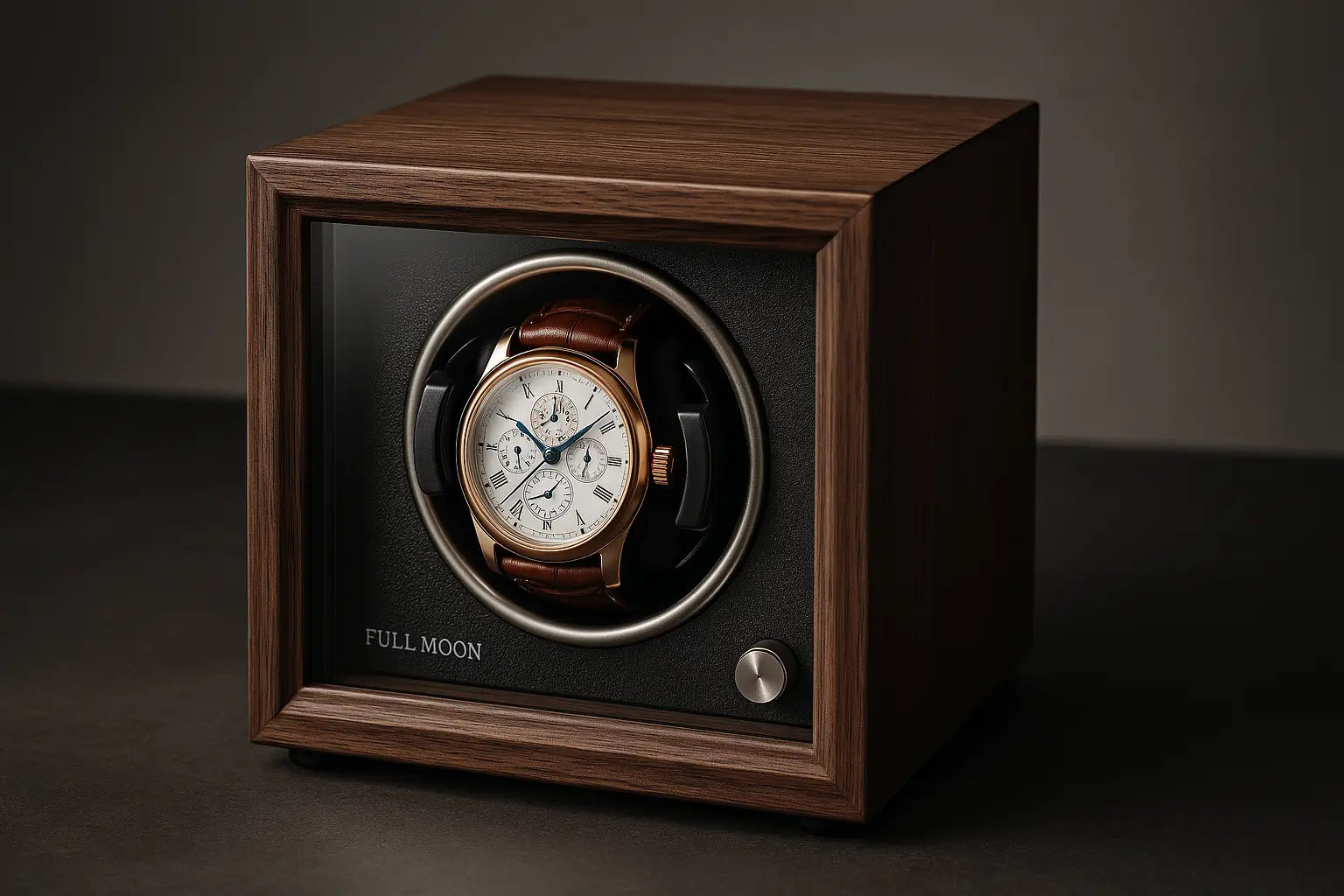
What is the best-selling watch in the world?
Which watch is the best-selling in the world among all the brands and models available on the market? We will explore...



The watch winder has become an essential accessory for any automatic watch enthusiast keen to preserve the precision and longevity of their timepieces. Given the wide variety of models available on the market, one question frequently arises: what is the best watch winder for an automatic watch? The answer, while seemingly simple, deserves in-depth analysis. Indeed, the best watch winder isn't universal, but rather the one that perfectly matches your collection and personal requirements.
To understand the importance of a good watch winder, you must first understand how an automatic watch works. Unlike quartz watches, an automatic watch is equipped with a mechanism that winds itself using the movements of its wearer's wrist. The rotor, the central component of this system, transforms these movements into energy stored in the mainspring. Without sufficient activity, the watch stops once its power reserve is depleted.
This is where the watch winder comes in. This device simulates the natural movements of the wrist when the watch is not being worn, thus keeping the mechanism running. The automatic watch winders available at Rotation Horlogère are designed to reproduce these movements precisely, ensuring optimal winding without the risk of over-tensioning the spring.
Improper winding can have detrimental effects on delicate watch mechanisms. A poor-quality winder can cause excessively rough or irregular movements, leading to premature wear of components. Conversely, insufficient winding requires frequent resetting of the time and date, which can also eventually damage the mechanism.

The first question to ask is how many watches you want to wind simultaneously. Watch winders range from a single slot to models that can accommodate up to 24 watches or more. For a beginner collector or one with only a few pieces, a compact model with 2 or 4 slots will be sufficient. More advanced collectors will opt for higher capacity or modular models, allowing them to add additional units as their collection grows.

The heart of a winder lies in its rotation mechanism. Several factors must be considered:
A quality winder should operate quietly, especially if it's placed in a bedroom. Mechanisms using high-quality DC motors and efficient damping systems ensure quiet operation that won't disturb your peace and quiet.
There are two main options: mains or battery power. Mains-powered models offer consistent reliability but require a nearby outlet. Battery-powered models offer more flexible placement but require periodic replacement. Hybrid systems, which offer both options, often represent the best compromise, ensuring continuous operation even in the event of a power outage.
Automatic watches, often made of materials that are susceptible to deterioration from prolonged exposure to direct light, benefit greatly from a winder that offers good protection. Models equipped with transparent, UV-treated covers or opaque cases preserve the brilliance of dials and bracelets while limiting dust accumulation.

Wooden watch winders offer a classic elegance that blends perfectly into traditional interiors. Wood also has excellent soundproofing properties. Various wood types are used, from dark walnut to light bamboo, allowing them to complement any decor. However, wood can be sensitive to humidity fluctuations and requires regular maintenance to maintain its original appearance.

Leather finishes give watch winders a luxurious and refined look. From full-grain to pebbled leather, to high-quality imitations, this material offers a variety of textures and colors. Leather is particularly well-suited for watch winder interiors, providing a soft yet firm grip that protects cases and bracelets from scratches.

Metal watch winders, whether made of stainless steel, brushed aluminum, or special alloys, are distinguished by their exceptional durability and contemporary aesthetic. These models blend perfectly with modern or industrial interiors. Metal has the advantage of being particularly scratch-resistant and easy to clean. Some manufacturers offer galvanized or anodized finishes that give the winder increased resistance to corrosion and fingerprints, while offering a wide range of colors.
Innovation in watch winders has led to the use of high-performance materials such as carbon fiber, acrylic, and composites. These materials combine lightness and strength while offering avant-garde design possibilities. Carbon fiber, an iconic material in modern watchmaking, gives the watch winder a technical appearance that is highly sought after by lovers of sports or contemporary watches.
Manufacturers in the high-end watch winder market, such as those offered by Rotation Horlogère, often incorporate several materials into their creations, for example combining a fine wood exterior with metal finishes and a leather or suede interior.
Beyond the exterior, the interior design of the winder plays a crucial role. The cushions must be firm enough to hold the watch in position, yet soft enough not to mark the straps. For metal straps, specific adapters may be required, while leather straps require supports that retain their natural shape. The interior lining must be scratch-resistant and ideally anti-static to avoid attracting dust.
Integrating an LED lighting system into a watch winder is more than just an aesthetically pleasing feature. When properly designed, this lighting enhances the details of watches and makes them easier to observe without having to remove them from the winder. Modern LED systems consume little energy and generate minimal heat, thus avoiding any risk to delicate mechanisms. The most sophisticated lighting options offer different light intensities and sometimes even a choice of colors to personalize the ambiance.
For collectors with valuable pieces, security is a major concern. Some watch winders incorporate locking systems with traditional keys, digital codes, or even fingerprints. These devices effectively protect against theft or unauthorized tampering, particularly important for collections displayed in professional spaces or accessible to visitors.
The ideal watch winder should blend harmoniously into its surroundings. Customization options include choosing finishes and colors, as well as sizes and configurations to fit specific spaces such as a dresser drawer, a dressing room shelf, or a dedicated display case. Some manufacturers even offer bespoke services to create unique pieces that perfectly match the customer's wishes, both in terms of aesthetics and functionality.
The digital age has also affected the world of watch winders. The most innovative models now incorporate connected features that allow you to control rotation parameters via a smartphone app, program personalized cycles for each slot, or even monitor winding performance. Some smart systems analyze the optimal winding level for each watch and automatically adjust their cycles accordingly, ensuring optimal performance accuracy.
The novice watch collector with one to three automatic watches will want a compact and versatile watch winder. A model offering different winding and rotation direction options will be a wise investment, even with a limited collection. Entry-level watch winders from specialist retailers like Rotation Horlogère offer excellent value for money without sacrificing essential features.
An enthusiast with a collection of five to ten watches will seek a balance between capacity, quality, and aesthetics. Modular winders or multi-slot cases with individually adjustable settings will accommodate watches of different brands and specifications. Investing in a mid-range model is justified by the protection it offers to a collection that is starting to add up.
The seasoned collector, with more than ten fine watchmaking watches, will gravitate toward high-end solutions offering impeccable precision and reliability. These winders are distinguished by silent mechanisms, noble materials, and artisanal finishes. A system allowing individualized settings for each watch becomes essential given the diversity of mechanisms present in a large collection. The investment, although substantial, remains proportional to the value of the timepieces it protects.
Owners of rare or historic collections require tailor-made solutions incorporating humidity and temperature control systems, and sometimes even specific anti-UV devices. These exceptional watch winders, often custom-made, can be integrated into secure cabinets or dedicated vaults. They represent the perfect blend of high technology and traditional craftsmanship, ensuring optimal preservation of irreplaceable pieces.
Like any mechanical device, a winder requires regular maintenance to ensure its longevity. Weekly dusting and a more thorough monthly cleaning of accessible parts will preserve the aesthetics and proper functioning of the mechanism. For wooden winders, annual treatment with suitable products will maintain the material's natural shine while protecting it from climatic variations.
Beyond routine maintenance, a periodic professional service is recommended every three to five years for quality watch winders. This preventative maintenance, similar to that of the watches themselves, includes checking the motors, lubricating moving parts, and adjusting rotation settings. Some manufacturers offer service to ensure the longevity of your investment.
A quality watch winder generally comes with a significant warranty, ranging from two to five years depending on the manufacturer. This confidence is a testament to the product's reliability and the manufacturer's commitment to its customers. The materials used, the precision of the mechanism, and the quietness of operation are reliable indicators of a watch winder's quality. Purchasing from specialist retailers like Rotation Horlogère also ensures competent after-sales service and personalized advice for maintaining your equipment.
At the end of this in-depth analysis, the answer to our initial question is confirmed: the best winder for an automatic watch is the one that precisely meets your specific needs. Whether it's a simple model for a budding collection or an elaborate system for exceptional timepieces, the key lies in the match between your collection and the technical characteristics of the winder.
Investing in a quality winder is a sensible approach for any watch enthusiast. By preserving the precision and longevity of your automatic watches, this now indispensable accessory allows you to fully enjoy your timepieces without the hassle of daily use.
Before making your choice, take the time to evaluate your current collection as well as its prospects for growth. Professional advice can be invaluable in identifying the best solution for your specific situation. Remember that a well-chosen winder will accompany your watches for many years, fully justifying careful consideration and an appropriate investment.

Which watch is the best-selling in the world among all the brands and models available on the market? We will explore...

It leaves no trace. No scratches, no dents. Nothing visible. And yet, magnetism is one of the quietest enemies of your automatic watch. ...

The world of watch boxes offers a multitude of options to meet various needs and preferences. From a simple storage box to...
Leave a comment
This site is protected by hCaptcha and the hCaptcha Privacy Policy and Terms of Service apply.